made to be enjoyed, not endured
isn't just a brilliant marketing campaign, it's 89.9% why we reach for chocolate in the first place
EDIT: adding this link to the Bean to Barstool podcast and blog; David followed up on my post here, and points out how this is so similar to a tactic used by Big Beer towards crafet beer. Worth a read!
Oh the outrage. Cadbury launched a new ad campaign and if you’ve seen it, and are a craft chocolate retailer or offer craft chocolate tastings, you may be mad. Maybe because of the response, like this:
Cadbury pokes fun at dark chocolate snobs in Bournville's first ad since the '70s
Forget cacao percentages and tasting notes of tree bark... Bournville is back with a brilliantly silly campaign that aims the pomp and pretension of dark chocolate culture.
But if you’re a craft chocolate maker I hope you recognized the lesson in it (however obscured by the laundry list of ingredients—we’re talking Cadbury, after all), and are taking notes. Specifically: “dark chocolate culture.” We, of the “I’m crafting this origin as an 82% dark because it begs to be heard on the higher end of the scale” should be giddy: we’re a culture! We are part of a zeitgeist!
Except for that pomp and pretension part. The “tasting notes of tree bark” part (checks wrappers to see if she has ever used that one), and wait, forget percentages????
Them’s fightin’ words in craftlandia.
If you haven’t seen it (maybe there are others besides this one?) you can watch here.
My take is they nailed it. They nailed the BS (that’s the snark-in-cheek, hilarious part of the ad), but also, pointed out an ongoing, seemingly never ending issue in craft: just because it’s craft or has a % slapped on the wrapper doesn’t mean it’s good. Or, crave-worthy. Worth buying a second time. The kind of chocolate you tell your friends about it’s so good.
Good, crave-worthy, repeat purchases, and—the true gold standard, word-of-mouth-worthy—are the goals of every craft chocolate business. Or ideally should be.
Even if our goal is to help fix the broken parts of the global cocoa bean production industry. Even if we believe industrial, mass-produced Milk Duds are true culinary duds.
This week in my online bean to bar course our livestream is coincidentally about batchcrafting—the part of our process where we refine the ingredients, creating the flavor we’re aiming for and the texture, then conche the batch to further enhance the flavor and texture. It’s the “symbol,” if you will, of craft chocolate: tiny melangers spinning, makers pouring nibs into the whirl of grinding chocolate. It is more than just tossing cocoa nibs and sugar into a melanger, in the way that driving a car is more than just turning on the ignition. It’s also the place where chocolate can go wrong, and often does go wrong, and yes, guilty as charged, though I learned to recognize it and correct it: that’s where the craft part, learning a skill and building on what we learn, comes in.
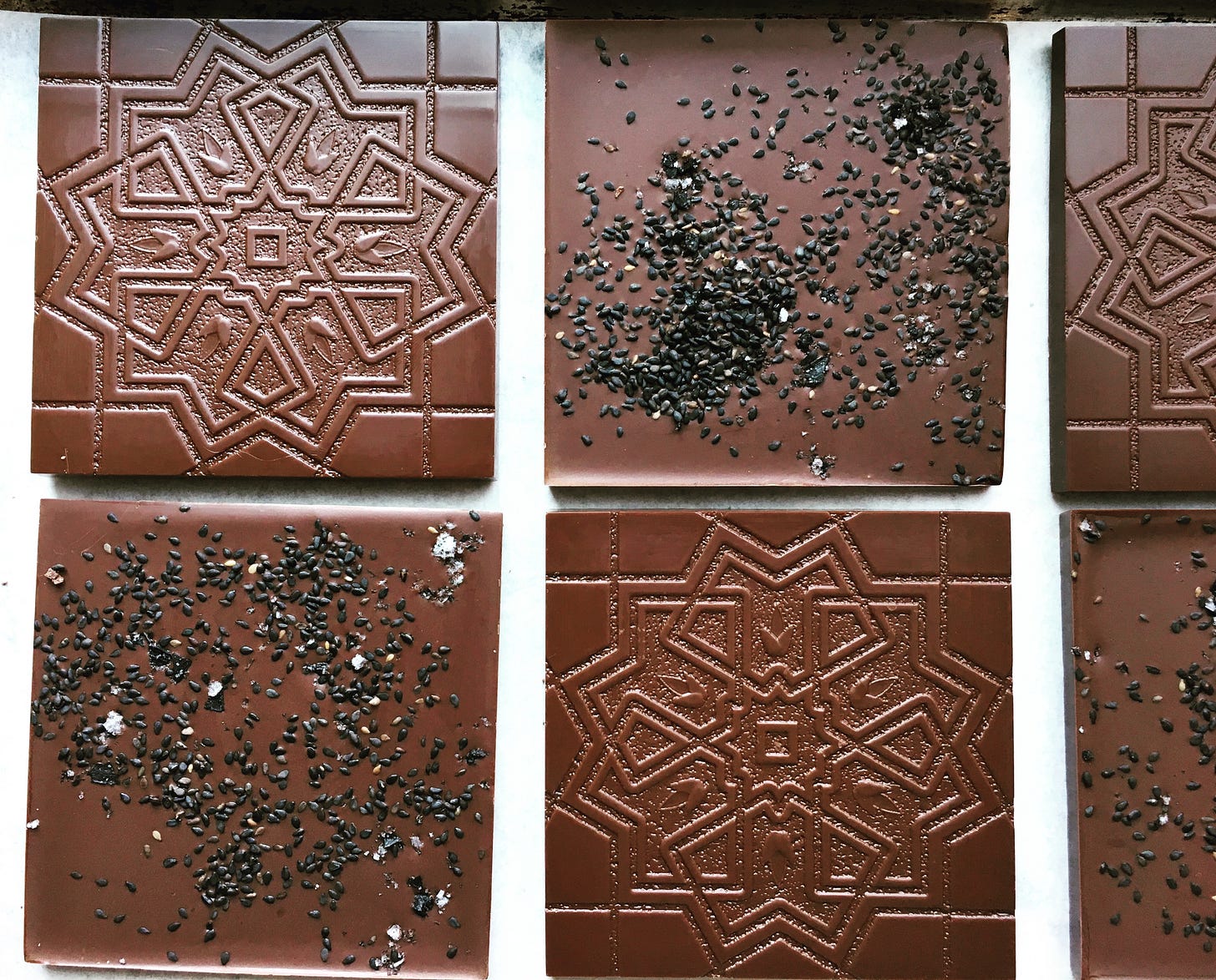
Quick re-cap of bean to bar craft chocolate.
We choose specific origins because they represent their own lovely, unique flavor potential. Think of an origin as its own galaxy: all those stars! space dust! planets aren’t stars! and whatever else our Astronomy 101 professor wanted us to learn. In the galaxy of say, Zorzal cacao from the Dominican Republic, we can learn to recognize the we know it when we taste it Zorzal constellation of flavors. In Viet Nam Ben Tre’, its constellation of flavors.
Many makers aim for the recognizable, easy-to-spot constellation: like the grouping of stars and planets that’s supposed to look like a swan (which to me, could also be a pig carrying a watermelon on his back) or whatever. Other makers might explore the galaxy more widely. Veer beyond the swan’s neck and off into the lesser, if not wild, unknown margins. The key point here isn’t what we aim for, but the word potential.
It’s our job as a bean to bar maker to understand the whole point of what we do is the potential. Not to replicate the flavor known as chocolate: we’re here to blow people’s minds. Make them delirious with tasting joy. Surprise their socks off. Wake them up to what chocolate can be, and keep reminding them how happy they are they opened their eyes.
Roasting is where we first aim in the direction of the constellation, not knowing if we’ve reached it until several more steps down the process line, or (sadly), if applying a one-size-fits-all approach of temperature + time = a roast, never truly knowing if and how we arrived there.
There’s cooling the beans and cracking and winnowing, and then voila, we have our nibs, another course-steering decision point: if we roast in small amounts, do we blend our roast batches if they aren’t all the same? Do we know if they do or don’t have the same flavor results?
Onward to the grinding and conching bits. We apply heat, along with and created by friction, and reduce the particle size of our nibs. Do we add cocoa butter? Will added cocoa butter make our batch creamier? Dilute the flavor or make it better? Make it less irksome to temper? Should it be the same origin as the nibs? Will some craft maker comment on social media how two-ingredient single origin is “better,” or “real craft,” and then what decision do we make? Do we add sugar at the get-go or wait? Do we use a one-70%-fits-all approach or explore the teensy glimmering stars sparkling at a far distance, or the ones winking at us not so far away? Do we conche and do we even understand what that is and how to do it and then, for how long? Would a bigger melanger make these decisions easier? (answer: yes and no).
From here we settle into a nice, smooth (hopefully) orbit: tempering and moulding up our bars. The results of our labor decisions-of-love will be shiny, with a snap, melt on our tongue, and (wait for it),
something that was clearly, no bones about it, made to be enjoyed, not endured.
Why I said Cadbury nails this unfortunate truth, that just because it’s “craft” or artisan or small batch bean to bar does not mean it’s good, or better. It does, however, mean, because craft has a big beaming spotlight on it (look at us, we’re single origin, we show % on our wrappers, two-ingredient, more ethical, handcrafted, or small batch—all of which is lingo for saying we are better than what you’ve been eating, and maybe, enjoying, for quite possibly your entire life) it better be exactly what it says it is.
We’ve set the bar really high, as it should be, but also, we need to clear that bar with a meteor shower of surprising delight.
All of us. Not just the big bros. Not just the more well-known makers.
Consider the Death Star(s) we’re up against, with highly-engineered machines and processes funded by big bucks and in many cases, scientific research, to make sure the consumer who buys the chocolate will want to repeat that choice over and over again. With their own marketing departments. Now consider the new-to-making-chocolate maker who asked in a Facebook chocolate group, in all innocence, if they were supposed to ferment the beans they’d just bought.
I’m not slighting that new maker; all those TikToks showing a single cocoa pod on a countertop waiting (wtf) to be made into chocolate, and all those dried, devoid of life pods on tasting tables and at every chocolate show, are just offering an empty shell glance at what craft is, without a hint of how to do it, much less, do it well.
For one moment let’s put aside all the traceable, ethical, fairtrade, organic, we love the farmers, etc etc jargon and see it for the marketing lingo it is, employed to entice buyers from one side of the chocolate table to ours. This marketing is no different from the very smart slapback of marketing lingo the Cads (😆) are using. It may be your personal why for becoming a chocolate maker, and that is wonderful. But is it why you’ve ever reached for chocolate? Is it what will make someone reach for your bars?
So, so many experts will tell us that we need to tell our story, and so, so many chocolate makers confuse our respect for the farmers and transparently traded beans and all the same soup of words we hear other makers using, as “our story.”
Is the story, “My chocolate is 2-ingredient” or “We use ethical beans” (can a bean be ethical? 🤔) working, or is it not working the way craft thought it would work? Did that highly-awarded maker slinging an entire reel of putdowns because their customers had the audacity to cross the craft threshold of their shop and ask for Dubai chocolate (which they begrudgingly obliged, but one tiny batch only!) do the craft community any good?
I mean, how would you feel if you walked into a chocolate shop you’d seen on Instagram, stood in front of an entire wall of rectangular bars with words like Madagascar and Bolivia and Figi having no idea what those places meant to flavor, seeing a bunch of random numbers (math + chocolate is not my personal favorite inclusion), 70% and 87% and 45% on and on, and timidly ask the shopkeep What is a Madagascar 70%?
This is why Dandelion Chocolate says they sell more chocolate chip cookies than bars. Everyone understands a cookie. A cookie isn’t mildly terrifying, or makes us feel stupid, the way math + a country of origin might if you’re new to the idea that chocolate isn’t just a KitKat, even if it’s a matcha KitKat.
Do you prefer chocolate (or beer, or cheese, or a mocha, or ice cream, or any food with pleasure as the intention) that’s made to be endured? No. You tap your Apple pay because you want delight, yummyness, a happy moment (or a few), a break from the kale protein-powered no-no finger telling you life sucks just endure it.
Maybe there’s a good reason behind the “pomp and pretension of dark chocolate culture” statement. Here’s a review of the ad, from the marketing-focused website Creative Boom.
(the ad) aims to launch its big "I'm back" moment by taking on the kind of dark chocolate elitism that leaves most people rolling their eyes. Two aficionados puff out their chests, sparring over obscure cacao origins and absurd tasting notes, each trying to out-snob the other. Meanwhile, a lone Bournville fan looks on, blissfully enjoying a chunk of chocolate without the theatrics. It's a comic mic drop for a bar that's never needed to shout.
If this pisses you off, I am not sorry. I am only sorry when I walk in Trader Joe’s and they have salted milk chocolate mini bars made at origin using Colombia cacao, in a bag for less than $4, that taste amazing and they are almost always sold out. Not sorry because they exist (cocoa pod artwork and all) but sorry that as one of the few, self-appointed, outspoken cheerleaders and guardians of the small/slow batch craft chocolate galaxy (my alter-ego might be Rocket), I haven’t helped more craft makers understand that not a single one of our loyal customers and the folks who don’t know yet our bars exist, is here for a ride on a mini-me Death Star.
How do we do it differently?
We need to try our best not to, as
writes, lose ourselves. This answers my earlier question, Is the story, “My chocolate is 2-ingredient” or “We use ethical beans” not working the way craft thought it would work? which is really a way of asking, what is missing?The tragedy isn't just that we lose ourselves; it's that we lose the very thing that could make us genuinely remarkable: our authentic contribution to the world.
This means stepping aside from the “this is how craft is done” lock step. It means taking a deep breath and believing in ourselves, listening to our own voice. Here’s my example, from the landing page of my website, with the story that has been front and center there since I started selling my chocolate in 2015. I wrote it after an email from a chocolate expert who cautioned me about trying to do things “differently than what we’re trying to do in craft chocolate.”
I am sure more than a few people thought, Say what? There are photos there too, of course, including this of my Thea Cacao Goddess wrapper design. Those slow batch cacao pod snails are part of my story too, woven in since the beginning. So small and slow I had a hard time keeping up with demand became a story itself: I make bars that take a long time because I love the hand-crafting aspect of my livelihood, so they are worth the wait.
Honestly, it should be the symbol for all small batch chocolate, because true small batch is, by its very nature, not reliant on conveyors and automations, ergo, is slow batch.
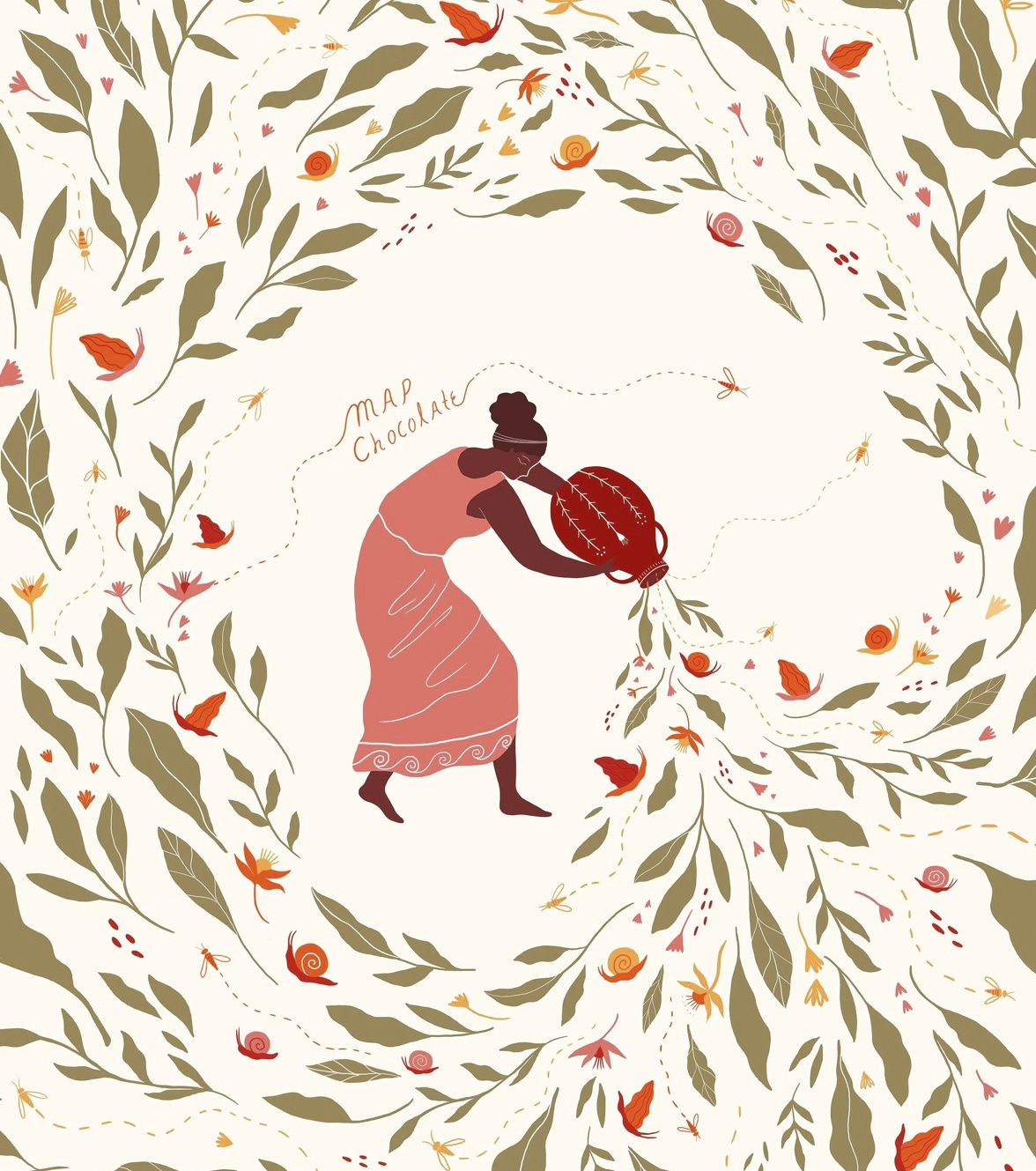
Also on the landing page, a poem that has nothing to do with chocolate, but is there because it is the essence of the “me” behind the bars, and how Map is different.
To sum up How to Do It
We make the best chocolate we can. We make it better than we think it needs to be. We don’t look for shortcuts, we create the approach that suits our workspace and our livelihood. We go out on a limb, or to a galaxy far far away, and make what we crave, not what everyone else is making. We explore the chocolate of our dreams. We make our contribution to the world.
I don’t think I’m the only one 100% here hoping for you to do this.
xxoo,
Mackenzie
p.s, kudos to anyone who makes an 89.9% bar with tasting notes of (Christmas) tree bark for their holiday collection this year 😆


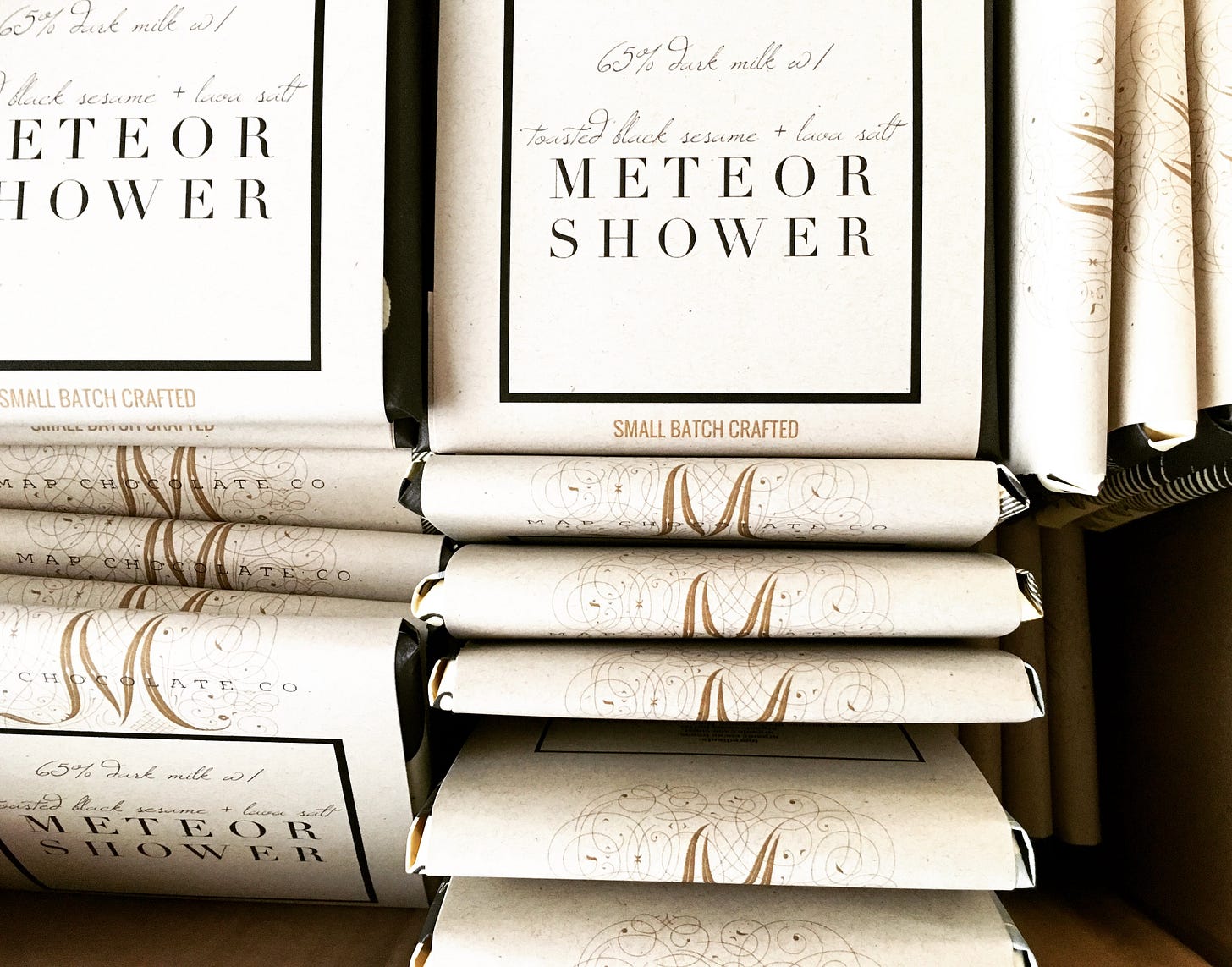
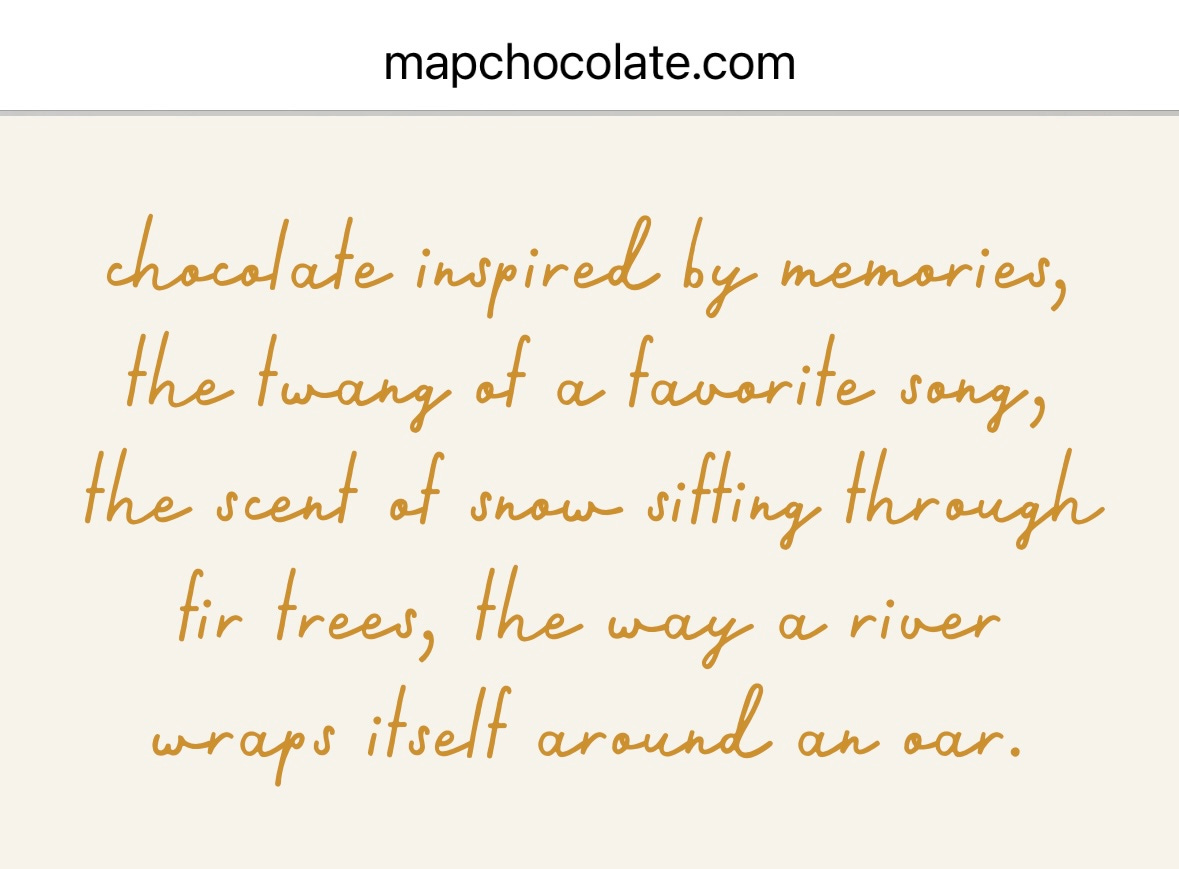
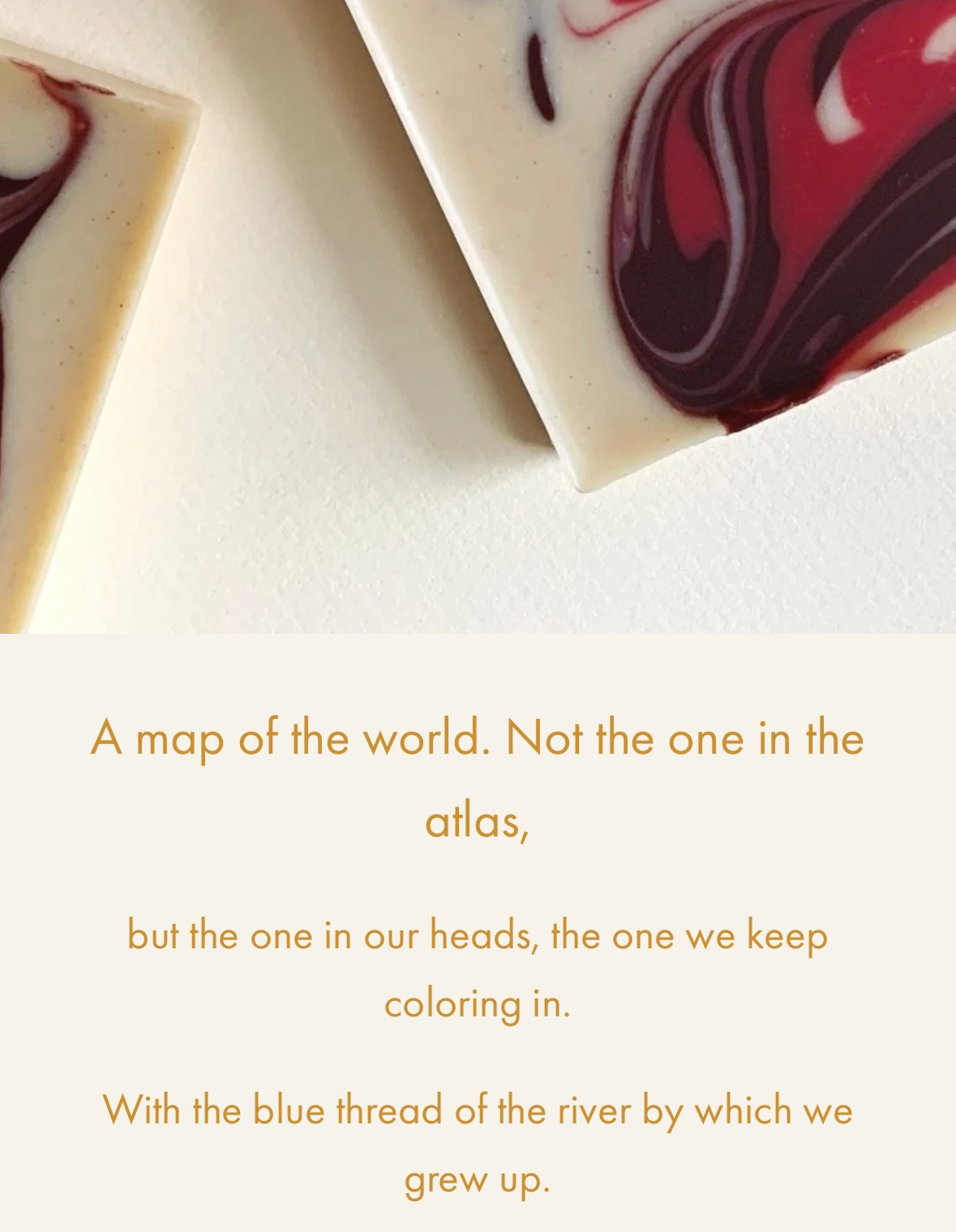
These big companies pour lots of money into marketing backed by big studies. So that commercial is targeted. This is piggybacking on Mr. Beast's Instagram post, where he and a couple of friends try craft chocolate bars and compare them to his Feastables. Craft chocolate responds the same way each time because craft chocolate does not have a cohesive community with set standards. They get angry, hurl complaints, and fail to see what's behind these campaigns.
Genuinely considering a bar called this chocolate tastes like a phobia that hasn't been named yet for a Halloween special after watching that!